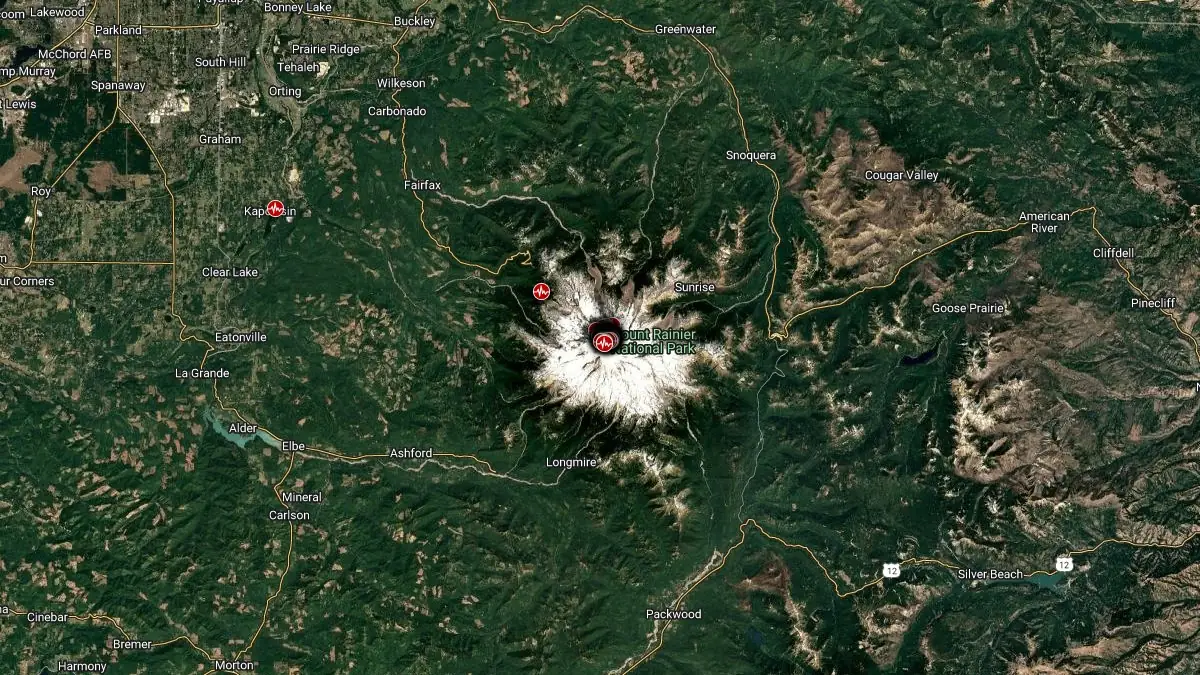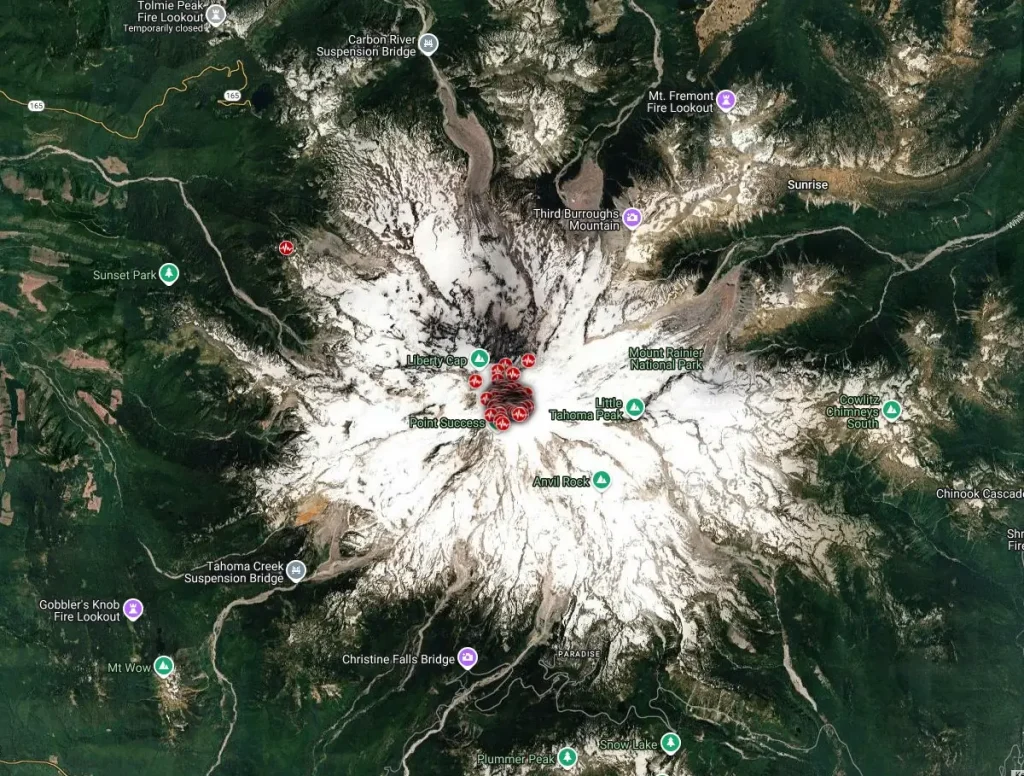Earthquake swarm detected beneath Mount Rainier, Washington
A swarm of hundreds of small earthquakes was detected beneath the summit of Mount Rainier, Washington, starting at 01:29 LT (08:29 UTC) on July 8, 2025, prompting increased monitoring by the USGS Cascades Volcano Observatory and the Pacific Northwest Seismic Network.

Earthquake swarm at Mount Rainier, Washington on July 8, 2025. Credit: TW/SAM, Google
A swarm of small earthquakes began under Mount Rainier’s summit early on July 8, with seismicity first detected at 01:29 LT (08:29 UTC). The Pacific Northwest Seismic Network (PNSN) and the USGS Cascades Volcano Observatory (CVO) have since recorded hundreds of earthquakes in the region.
The earthquakes are located at depths between 2 and 6 km (1.2–3.7 miles) beneath the summit. The largest earthquake thus far was M1.7 at 04:52 LT (11:52 UTC). The rate of activity peaked at several events per minute during the initial hours of the swarm but no earthquakes have been felt at the surface.
According to CVO, there is no indication of magmatic movement or surface deformation. No changes have been observed in infrasound signals or volcanic gas emissions. As a result, the Volcano Alert Level remains at Green (Normal), and the Aviation Color Code is also Green.
Hydrothermal activity, rather than magmatic intrusion, is believed to be the primary driver of the swarm. Such swarms occur once or twice annually beneath Mount Rainier.
On average, about 9 earthquakes per month are typically located within 5 km (3 miles) of the summit. This current swarm is one of the more significant in recent years but remains within historical patterns. The most comparable event occurred in 2009 when over 1 000 earthquakes were recorded within three days, with the largest reaching magnitude 2.3.
CVO and PNSN continue to monitor the situation with a full suite of ground-based seismometers, infrasound sensors, GPS stations, and webcams.
At this time, there is no evidence suggesting an increased likelihood of volcanic eruption.


Mount Rainier is an active stratovolcano located within Mount Rainier National Park in Washington State, approximately 73 km (45 miles) southeast of Tacoma and 97 km (60 miles) south-southeast of Seattle.
This volcano is 4 392 m (14 411 feet) high, it is the tallest peak in the Cascade Range and hosts the highest concentration of glacial ice in the contiguous United States.
Primary volcanic hazards associated with Mount Rainier include lahars (volcanic mudflows), pyroclastic flows, ashfall, and short lava flows. While lahars pose the most significant risk, with some historic events having traveled into the densely populated Puget Sound lowlands, other volcanic phenomena stay well within the limits of the National Park.
Mount Rainier is classified as a Very High Threat volcano by the USGS under the National Volcano Early Warning System (NVEWS), due to the diversity of hazards and proximity to infrastructure and population centers.
Normal background activity at Mount Rainier includes persistent steam and gas emissions and low-level seismicity.
Activity at Mount Rainier over the past 15 000 years has been marked by multiple eruptive phases and associated far-traveled lahars. Most of these lahars occurred during eruptive episodes, but at least one major event, originating from a collapse of altered rock in the Sunset Amphitheater area on the upper west flank approximately 500 years ago, occurred without a known eruption.
This type of event, termed a “no-notice lahar,” presents a significant hazard due to its unpredictability. Similar events could impact river systems such as the Puyallup and Nisqually.
The most recent eruptive episode with strong geological evidence occurred approximately 1 000 years ago.
References:
1 USGS Volcano Notice for Mount Rainier – USGS/CVO – July 8, 2025 at 16:26 UTC
I'm a dedicated researcher, journalist, and editor at The Watchers. With over 20 years of experience in the media industry, I specialize in hard science news, focusing on extreme weather, seismic and volcanic activity, space weather, and astronomy, including near-Earth objects and planetary defense strategies. You can reach me at teo /at/ watchers.news.


Commenting rules and guidelines
We value the thoughts and opinions of our readers and welcome healthy discussions on our website. In order to maintain a respectful and positive community, we ask that all commenters follow these rules.